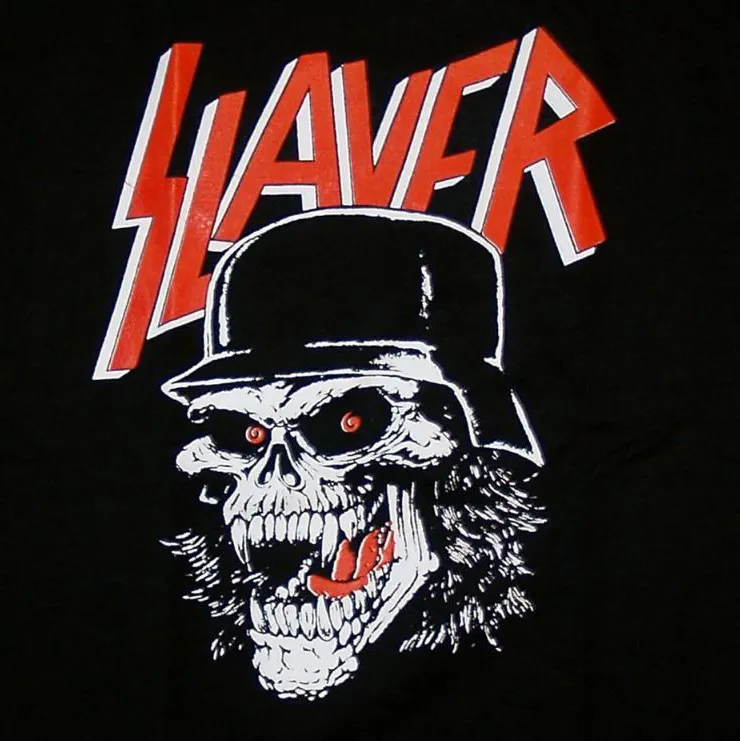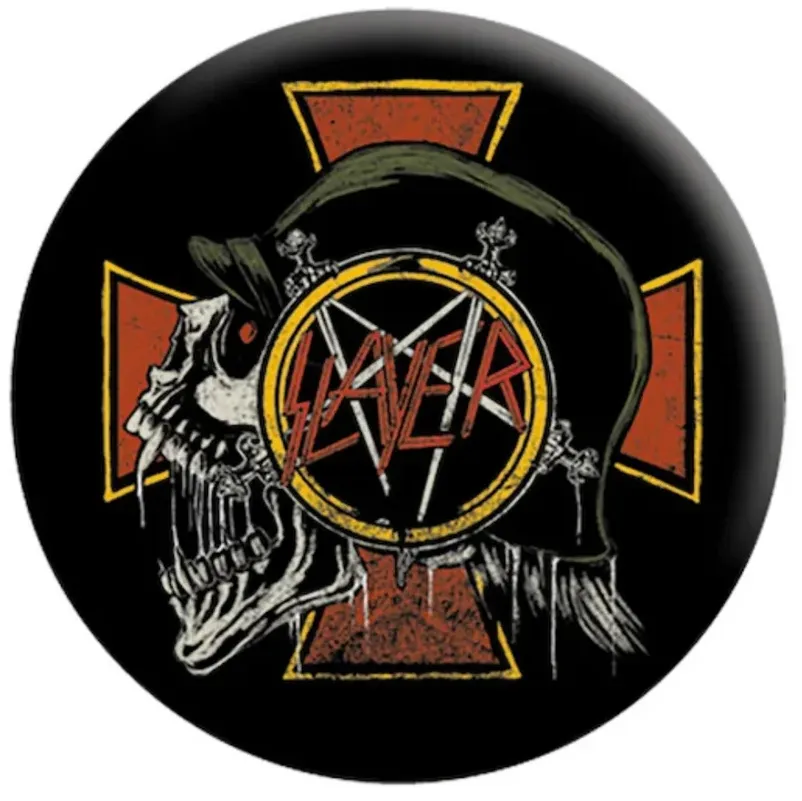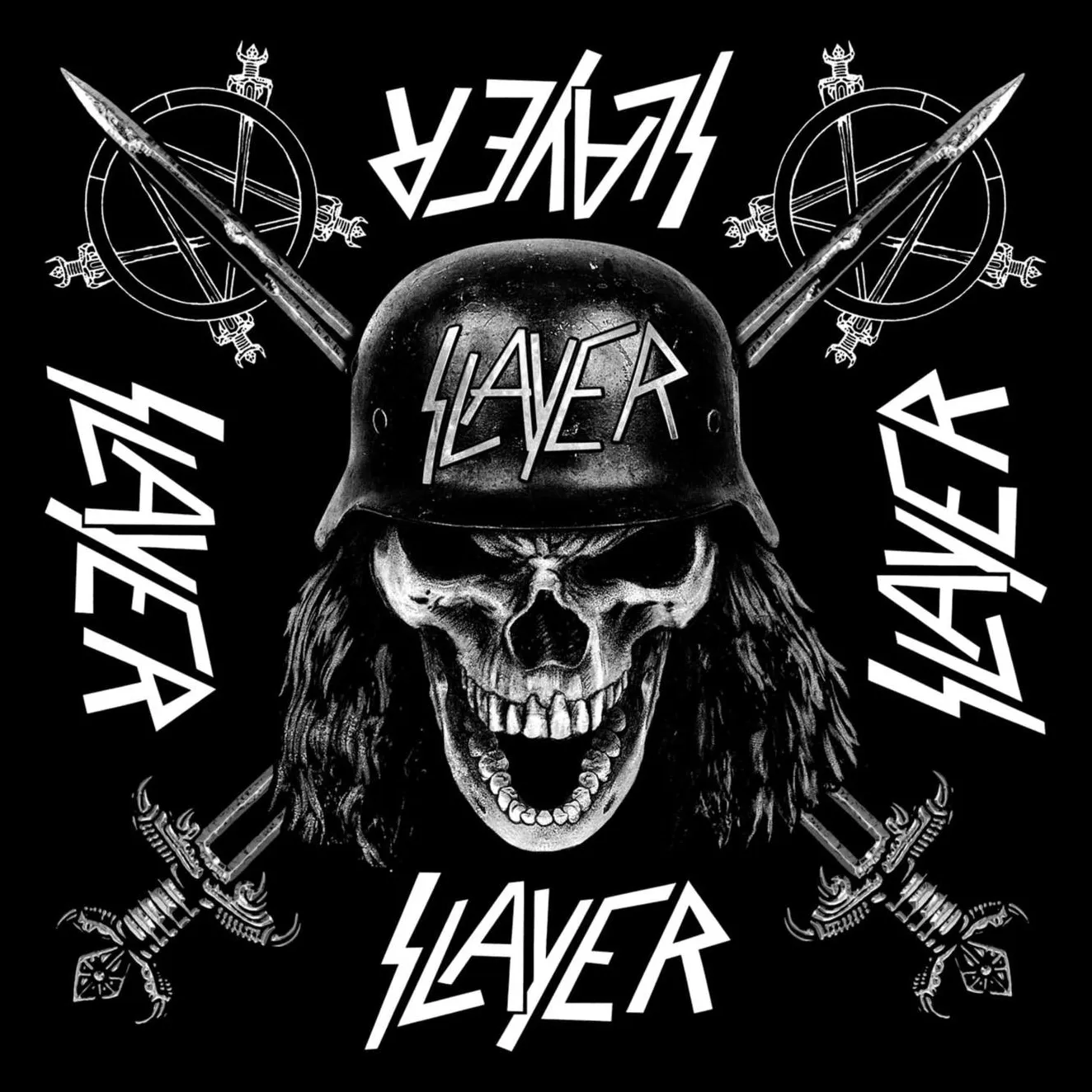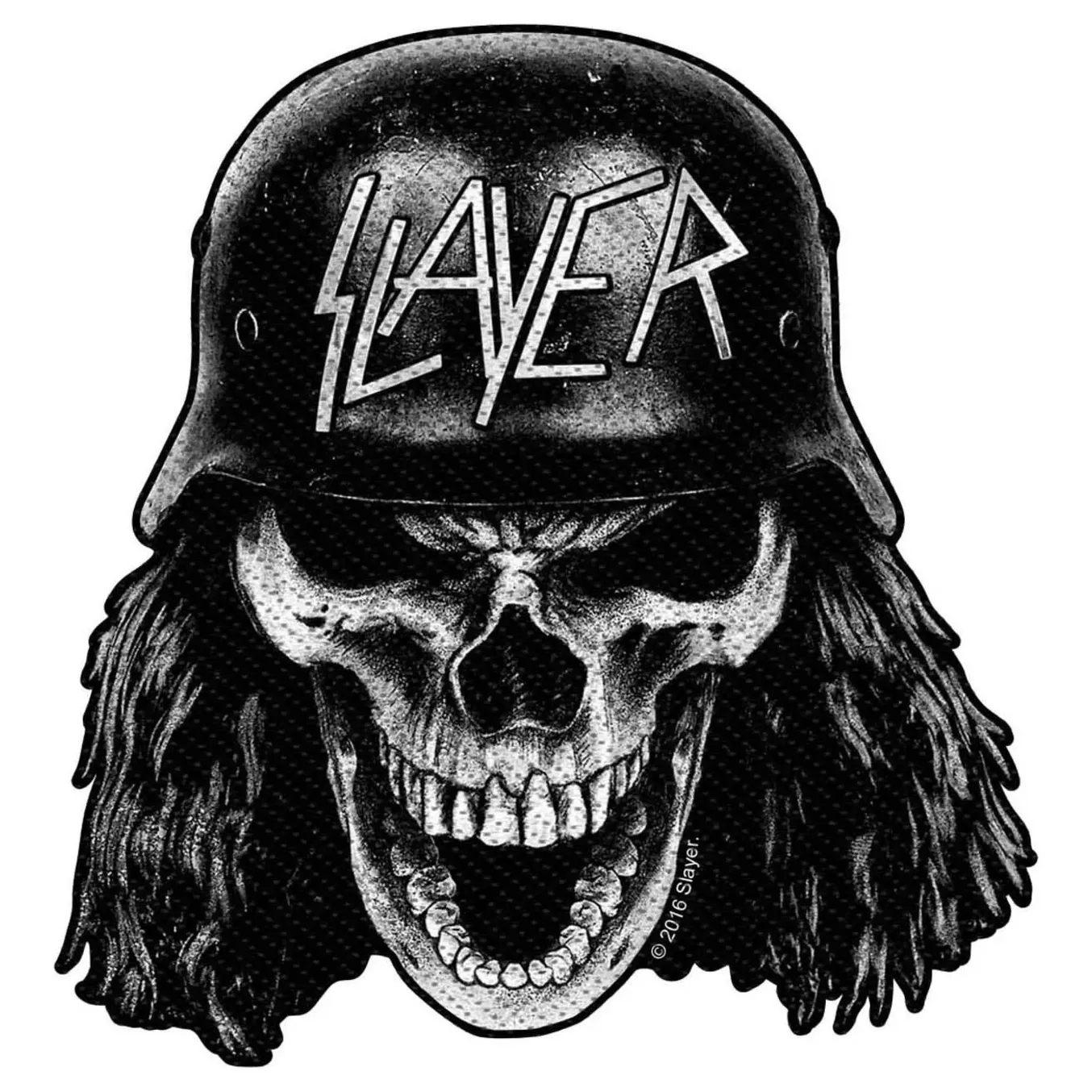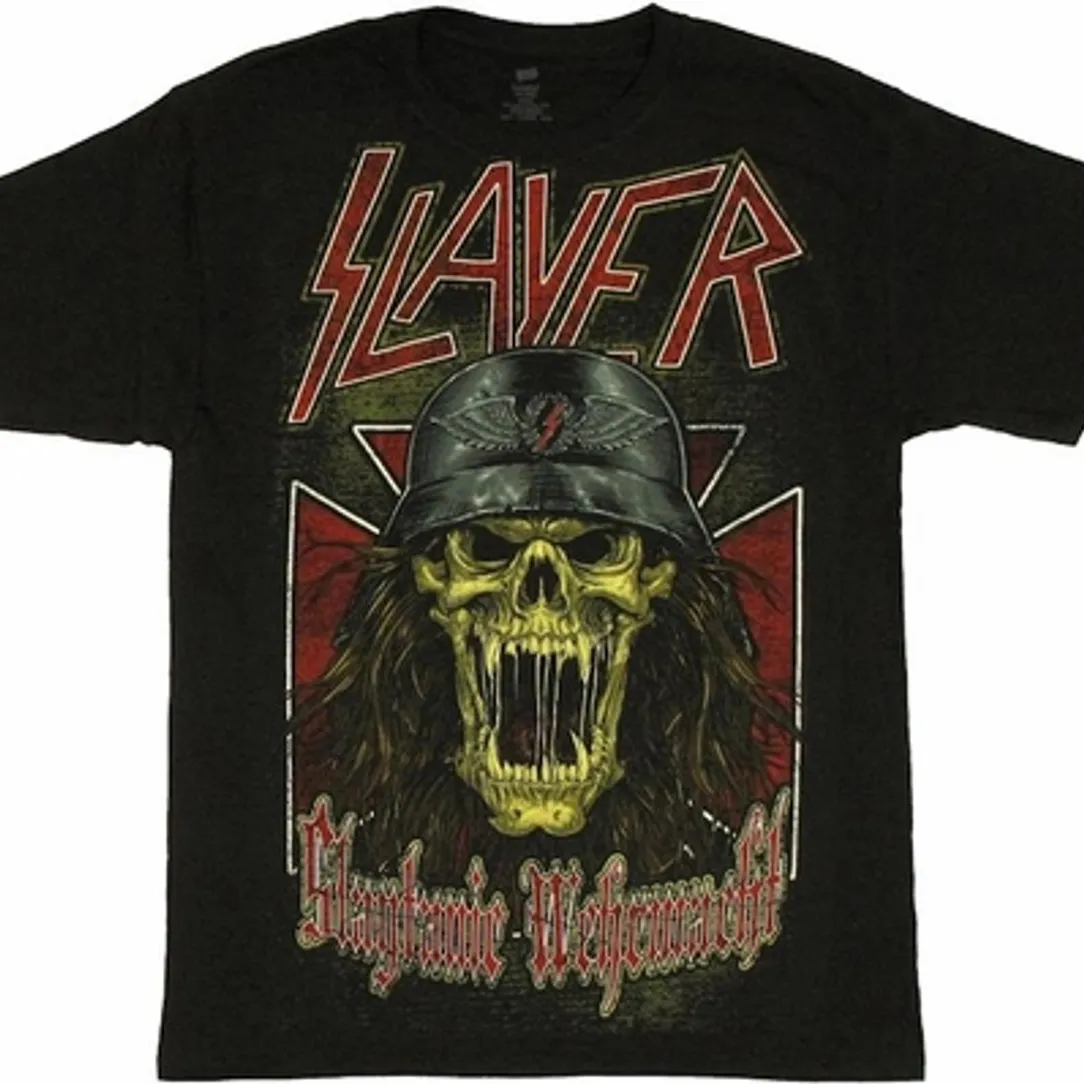The Ghost of War or “Wehrmacht skull” symbol associated with Slayer is inspired by the “Totenkopf” (German for “death’s head”), a skull-and-crossbones emblem historically used by various military units, notably in Germany. Its origins trace back to the 18th century, with the Prussian army’s Hussar regiments adopting it as a symbol of bravery and a reminder of mortality. During World War II, the Totenkopf was prominently used by Nazi Germany’s SS units, including the Waffen-SS and the SS-Totenkopfverbände.
Slayer’s incorporation of the Totenkopf into their imagery has sparked controversy, with some interpreting it as an endorsement of Nazi ideology. However, the band has consistently stated that their use of such symbols is intended to provoke and evoke the horrors of war, aligning with the dark themes present in their music. They have denied any affiliation with or support for Nazi beliefs.
It’s important to note that the Totenkopf symbol has been used by various military units throughout history, not exclusively by Nazi Germany. Its adoption by Slayer is part of a broader tradition in heavy metal music, where provocative and controversial imagery is often employed to challenge societal norms and evoke strong emotional responses.
For a visual reference, Slayer’s “Slaytanic Wehrmacht” merchandise often features the Totenkopf symbol, exemplifying their use of this imagery. In summary, Slayer’s use of the Totenkopf symbol is a deliberate artistic choice aimed at provoking thought and reflecting the dark themes of their music, rather than an endorsement of the ideologies historically associated with the emblem.
01 - 05 Different reproductions of the Wehrmacht Skull on pieces of merchandising linked to Slayer and the band’s fandom, the “Slaytanic Wehrmacht”.
